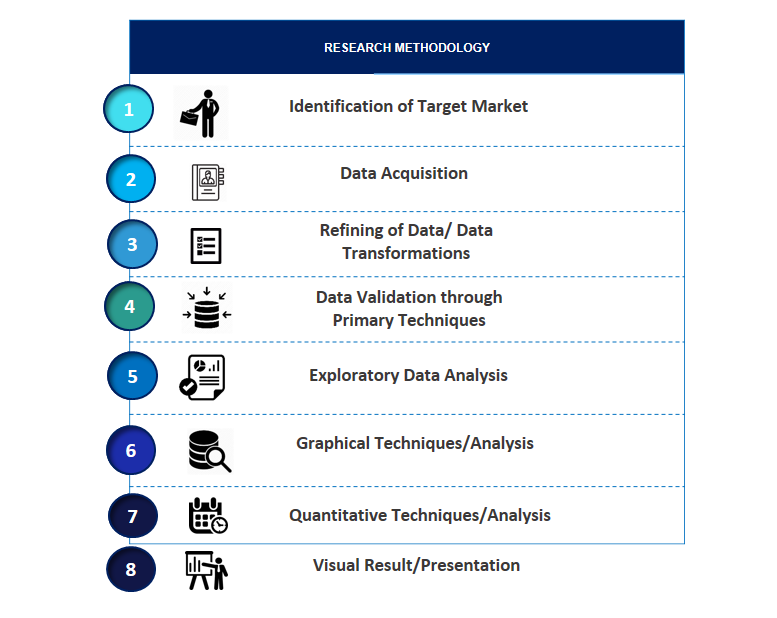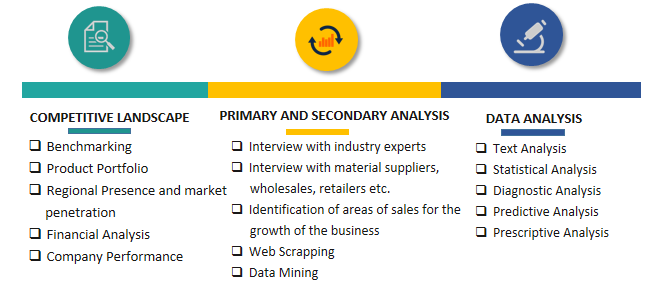Saudi Arabia Fintech Market Introduction and Overview
According to SPER Market Research, the Saudi Arabia Fintech Market is estimated to reach USD 111.35 billion by 2033 with a CAGR of 6.32%.
The term "fintech," which stands for financial technology, describes the application of technology to enhance and mechanise financial services. Mobile banking, digital payments, online lending, blockchain, and cryptocurrency are just a few of the many applications it covers. Fintech startups want to upend established financial institutions and give individuals and businesses easier access to financial services that are faster, more efficient, and more accessible. Fintech is changing how individuals save, borrow, invest, and manage their money by utilising data analytics, artificial intelligence, and other cutting-edge technologies.
- Paymennt.com, a UAE-based payments service company, was purchased by Saudi fintech startup Hala in February 2023. Hala will be able to handle omnichannel payments, including digital payments in its product offerings, and help its small and medium-sized enterprise (SME) clients boost their online presence with this acquisition.
- The National Commercial Bank (NCB), the biggest bank in Saudi Arabia, launched "AlAhliOnline," a new digital bank that offers a range of banking services via a mobile app, such as account opening, loans, and bill payment. This announcement was made in August 2021.
Market Opportunities and Challenges
Opportunities-
Regulatory Support and Digital Transformation- The fintech sector in Saudi Arabia is expected to grow rapidly over the course of the forecast period for a number of reasons. Fintech businesses are finding success in an atmosphere that is being created by the nation's rapid digital transformation. This is demonstrated by the growing number of online banking and payment options, which are gaining traction with customers. The Saudi Arabian Monetary Authority (SAMA) has moreover been aggressively promoting the growth of the fintech industry, one of its initiatives being the establishment of a regulatory sandbox to foster innovation.
Challenges-
- Cybersecurity and Data Privacy: The potential of cybersecurity threats and data breaches is a major worry for fintech organisations as well as customers, given the growing dependence on digital platforms and data-driven technology.
- Regulatory Obstacles: Fintech enterprises must negotiate complicated regulatory environments and deal with regulatory obstacles. To encourage innovation while maintaining consumer protection and financial stability, regulatory reforms and transparency are crucial.
Market Competitive Landscape
Saudi Arabia's fintech market is fragmented. The market is seeing cooperation between local banks and multinational fintech companies to establish varied operations in the country. Market actors are collaborating to foster innovation and experimentation, resulting in a strong and inclusive fintech ecosystem capable of long-term growth. The main players in the market include STC Pay, HyperPay, Tamara, PayTabs, Geidea, Hala, Raqamyah, Halalah, OneCard, and Others.
Scope of the Report:
| Report Metric | Details |
| Market size available for years | 2020-2033 |
| Base year considered | 2023 |
| Forecast period | 2024-2033 |
| Segments covered | By Technology, By Application, By End Users.
|
| Regions covered | Northern and Central Region, Western Region, Eastern Region, Southern Region.
|
| Companies Covered | STC Pay, HyperPay, Tamara, PayTabs, Geidea, Hala, Raqamyah, Halalah, OneCard, SADAD Payment, CashU, E-Dirham G2, Tap Payments, Benaa Capital, Nana. |
COVID-19 Impact on Saudi Arabia Fintech Market
The COVID-19 pandemic has an impact on Saudi Arabia's fintech business. Lockdowns and social distancing measures implemented to combat the virus's spread resulted in increased use of digital financial services. This development was especially noticeable in online payments, mobile banking, and e-commerce. Many traditional financial institutions have likewise intensified their digital transformation initiatives in response to the new normal. Despite the hurdles provided by the pandemic, the Saudi fintech business has continued to expand and attract investment. Overall, the epidemic has accelerated the adoption of digital financial services in the country.
Key Target Audience:
- Banks and Financial Institutions
- Payment Service Providers
- Digital Wallet Providers
- E-commerce Platforms
- Regulatory Bodies (e.g., Saudi Central Bank)
- Investors and Venture Capitalists
- Government Agencies
- SMEs and Startups
- Insurance Companies (Insurtech)
- Wealth Management Firms
- Cybersecurity Firms
- Remittance Service Providers
Our in-depth analysis of the Saudi Arabia Fintech Market includes the following segments:
| By Technology: | Application Programming Interface [API]Artificial Intelligence [AI]BlockchainRobotic Process AutomationData AnalyticsOthers |
| By Application: | Payment & Fund TransferLoansInsurance & Personal FinanceWealth ManagementOthers |
| By End Users: | BankingInsuranceSecuritiesOthers |
Key Topics Covered in the Report:
- Saudi Arabia Fintech Market Size (FY’2024-FY’2033)
- Overview of Saudi Arabia Fintech Market
- Segmentation of Saudi Arabia Fintech Market By Technology (Application Programming Interface [API], Artificial Intelligence [AI], Blockchain, Robotic Process Automation, Data Analytics, Others)
- Segmentation of Saudi Arabia Fintech Market By Application (Payment & Fund Transfer, Loans, Insurance & Personal Finance, Wealth Management, Others)
- Segmentation of Saudi Arabia Fintech Market By End Users (Banking, Insurance, Securities, Others)
- Statistical Snap of Saudi Arabia Fintech Market
- Expansion Analysis of Saudi Arabia Fintech Market
- Problems and Obstacles in Saudi Arabia Fintech Market
- Competitive Landscape in the Saudi Arabia Fintech Market
- Impact of COVID-19 and Demonetization on Saudi Arabia Fintech Market
- Details on Current Investment in Saudi Arabia Fintech Market
- Competitive Analysis of Saudi Arabia Fintech Market
- Prominent Players in the Saudi Arabia Fintech Market
- SWOT Analysis of Saudi Arabia Fintech Market
- Saudi Arabia Fintech Market Future Outlook and Projections (FY’2024-FY’2033)
- Recommendations from Analyst
1. Introduction
1.1. Scope of the report
1.2. Market segment analysis
2. Research Methodology
2.1. Research data source
2.1.1. Secondary Data
2.1.2. Primary Data
2.1.3. SPER’s internal database
2.1.4. Premium insight from KOL’s
2.2. Market size estimation
2.2.1. Top-down and Bottom-up approach
2.3. Data triangulation
3. Executive Summary
4. Market Dynamics
4.1. Driver, Restraint, Opportunity, and Challenges analysis
4.1.1. Drivers
4.1.2. Restraints
4.1.3. Opportunities
4.1.4. Challenges
4.2. COVID-19 Impacts of the Saudi Arabia Fintech Market
5. Market variable and outlook
5.1. SWOT Analysis
5.1.1. Strengths
5.1.2. Weaknesses
5.1.3. Opportunities
5.1.4. Threats
5.2. PESTEL Analysis
5.2.1. Political Landscape
5.2.2. Economic Landscape
5.2.3. Social Landscape
5.2.4. Technological Landscape
5.2.5. Environmental Landscape
5.2.6. Legal Landscape
5.3. PORTER’s Five Forces
5.3.1. Bargaining power of suppliers
5.3.2. Bargaining power of buyers
5.3.3. Threat of Substitute
5.3.4. Threat of new entrant
5.3.5. Competitive rivalry
5.4. Heat Map Analysis
6. Competitive Landscape
6.1. Saudi Arabia Fintech Market Manufacturing Base Distribution, Sales Area, Product Type
6.2. Mergers & Acquisitions, Partnerships, Product Launch, and Collaboration in Saudi Arabia Fintech Market
7. Saudi Arabia Fintech Market, By Technology (USD Million) 2020-2033
7.1. Saudi Arabia Fintech Market Size, Share and Forecast, By Technology, 2020-2026
7.2. Saudi Arabia Fintech Market Size, Share and Forecast, By Technology, 2027-2033
7.3. Application Programming Interface [API]
7.4. Artificial Intelligence [AI]
7.5. Blockchain
7.6. Robotic Process Automation
7.7. Data Analytics
7.8. Others
8. Saudi Arabia Fintech Market, By Application (USD Million) 2020-2033
8.1. Saudi Arabia Fintech Market Size, Share and Forecast, By Application, 2020-2026
8.2. Saudi Arabia Fintech Market Size, Share and Forecast, By Application, 2027-2033
8.3. Payment & Fund Transfer
8.4. Loans
8.5. Insurance & Personal Finance
8.6. Wealth Management
8.7. Others
9. Saudi Arabia Fintech Market, By End Users (USD Million) 2020-2033
9.1. Saudi Arabia Fintech Market Size, Share and Forecast, By End Users, 2020-2026
9.2. Saudi Arabia Fintech Market Size, Share and Forecast, By End Users, 2027-2033
9.3. Banking
9.4. Insurance
9.5. Securities
9.6. Others
10. Saudi Arabia Fintech Market Forecast, 2020-2033 (USD Million)
10.1. Saudi Arabia Fintech Market Size and Market Share
11. Saudi Arabia Fintech Market, By Region, 2020-2033 (USD Million)
11.1. Saudi Arabia Fintech Market Size and Market Share By Region (2020-2026)
11.2. Saudi Arabia Fintech Market Size and Market Share By Region (2027-2033)
11.3. Northern and Central Region
11.4. Western Region
11.5. Eastern Region
11.6. Southern Region.
11.7. Rest of Saudi Arabia
12. Company Profile
12.1. STC Pay
12.1.1. Company details
12.1.2. Financial outlook
12.1.3. Product summary
12.1.4. Recent developments
12.2. HyperPay
12.2.1. Company details
12.2.2. Financial outlook
12.2.3. Product summary
12.2.4. Recent developments
12.3. Tamara
12.3.1. Company details
12.3.2. Financial outlook
12.3.3. Product summary
12.3.4. Recent developments
12.4. PayTabs
12.4.1. Company details
12.4.2. Financial outlook
12.4.3. Product summary
12.4.4. Recent developments
12.5. Geidea
12.5.1. Company details
12.5.2. Financial outlook
12.5.3. Product summary
12.5.4. Recent developments
12.6. Hala
12.6.1. Company details
12.6.2. Financial outlook
12.6.3. Product summary
12.6.4. Recent developments
12.7. Raqamyah
12.7.1. Company details
12.7.2. Financial outlook
12.7.3. Product summary
12.7.4. Recent developments
12.8. Halalah
12.8.1. Company details
12.8.2. Financial outlook
12.8.3. Product summary
12.8.4. Recent developments
12.9. SADAD Payment
12.9.1. Company details
12.9.2. Financial outlook
12.9.3. Product summary
12.9.4. Recent developments
12.10. CashU
12.10.1. Company details
12.10.2. Financial outlook
12.10.3. Product summary
12.10.4. Recent developments
12.11. E-Dirham G2
12.11.1. Company details
12.11.2. Financial outlook
12.11.3. Product summary
12.11.4. Recent developments
12.12. Tap Payments
12.12.1. Company details
12.12.2. Financial outlook
12.12.3. Product summary
12.12.4. Recent developments
12.13. Benaa Capital
12.13.1. Company details
12.13.2. Financial outlook
12.13.3. Product summary
12.13.4. Recent developments
12.14. Nana
12.14.1. Company details
12.14.2. Financial outlook
12.14.3. Product summary
12.14.4. Recent developments
12.15. Others
13. Conclusion
14. List of Abbreviations
15. Reference Links
SPER Market Research’s methodology uses great emphasis on primary research to ensure that the market intelligence insights are up to date, reliable and accurate. Primary interviews are done with players involved in each phase of a supply chain to analyze the market forecasting. The secondary research method is used to help you fully understand how the future markets and the spending patterns look likes.
The report is based on in-depth qualitative and quantitative analysis of the Product Market. The quantitative analysis involves the application of various projection and sampling techniques. The qualitative analysis involves primary interviews, surveys, and vendor briefings. The data gathered as a result of these processes are validated through experts opinion. Our research methodology entails an ideal mixture of primary and secondary initiatives.


